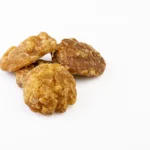If there’s one dish that reigns supreme in the world of Indian vegetarian cuisine, it’s undoubtedly Shahi Paneer. The very name exudes an air of grandeur, and rightly so, as this dish has long been associated with royalty and culinary excellence. Join us on a journey to explore the rich history, opulent ingredients, regional variations, and preparation of Shahi Paneer—a dish that continues to captivate the hearts and palates of food enthusiasts worldwide.
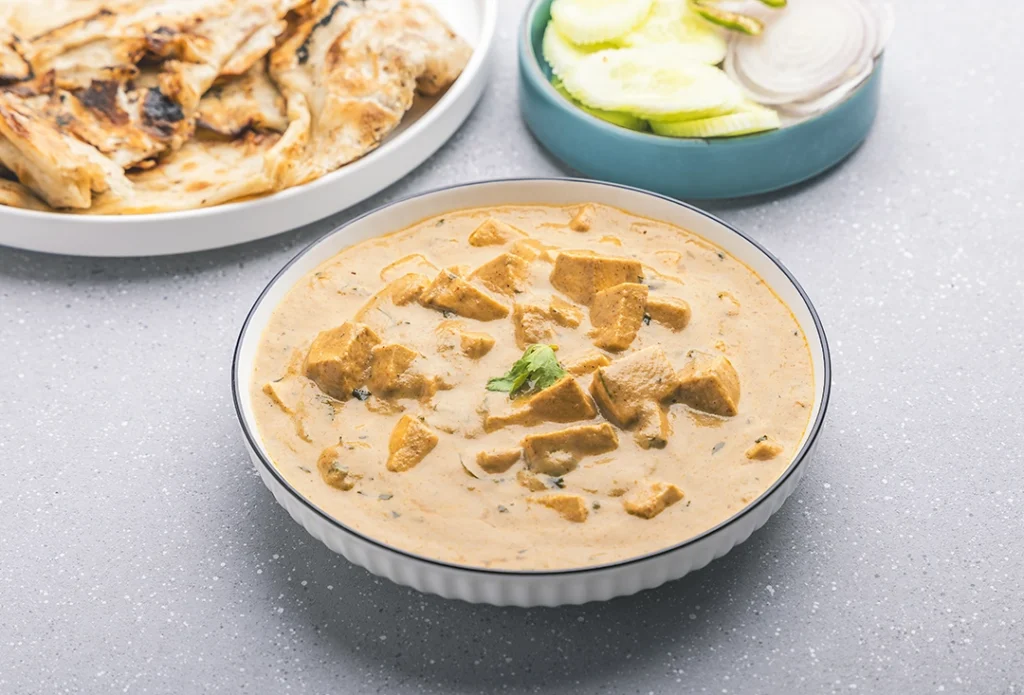
Table of Contents
Unveiling the Regal Origins:
Shahi Paneer’s story unfolds during the opulent era of the Mughal Empire in India. The Mughal emperors were renowned for their extravagant feasts and luxurious lifestyles, and their royal kitchens were hotbeds of culinary innovation. It was within these magnificent kitchens that Shahi Paneer first graced the royal tables.
The Ingredients Fit for Kings and Queens:
At the heart of Shahi Paneer lies the star ingredient—paneer. Paneer, or Indian cottage cheese, is celebrated for its creamy texture and mild flavor, making it an ideal canvas for the lavish flavors that follow.
The magic of Shahi Paneer lies in its velvety sauce, known as the “shahi” sauce. This decadent concoction combines cream, yogurt, and a symphony of aromatic spices. Saffron threads, cardamom pods, and kewra water are often included to elevate the dish to new heights of luxury.
The Art of Culinary Craftsmanship:
Crafting Shahi Paneer is akin to an art form. The paneer is typically cut into cubes and lightly fried to impart a golden hue and a hint of crispiness. Meanwhile, the sauce is prepared separately, with each ingredient added with precision to achieve the perfect harmony of flavors. Saffron lends a delicate floral aroma and a rich golden color, while cardamom and kewra water infuse the sauce with an exotic fragrance.
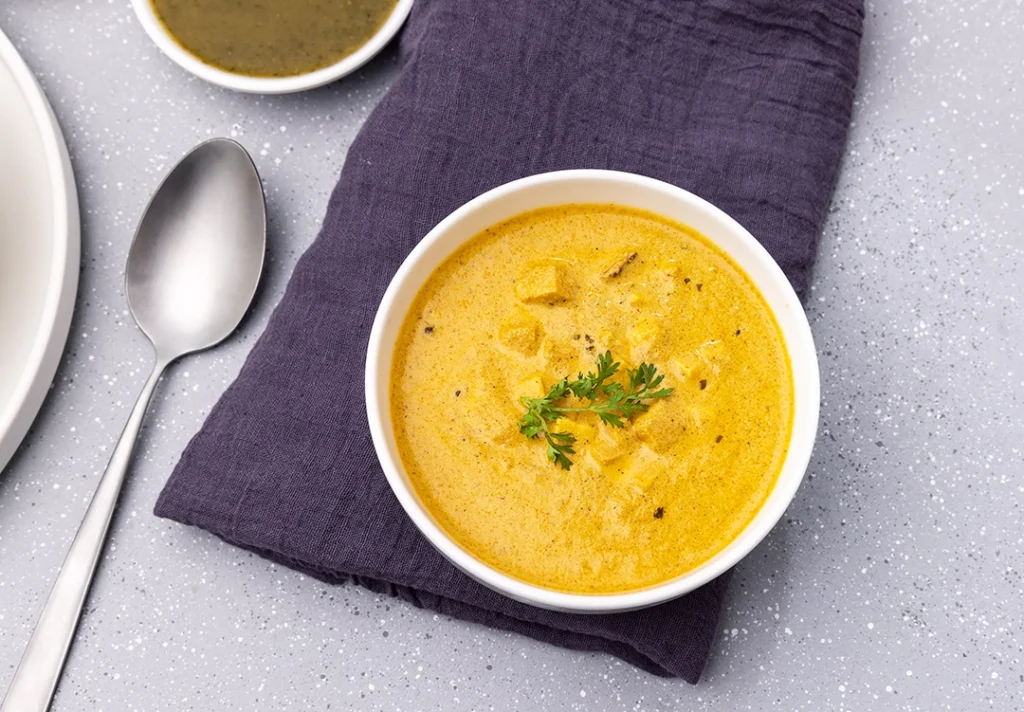
Origins and Historical Roots:
Shahi Paneer’s story is a tale of flavors that transcend borders and centuries. It finds its roots in the sumptuous kitchens of the Mughal emperors, who ruled India from the early 16th to the mid-18th centuries. The term “Shahi” itself means “royal” in Hindi, which aptly describes the grandeur associated with the dish.
The Mughals, with their Persian and Central Asian heritage, brought with them a rich culinary tradition characterized by aromatic spices, rich gravies, and a love for dairy products. It was in this environment that Shahi Paneer was born—a dish that married the Mughal penchant for creamy sauces with Indian cottage cheese, and paneer.
Path to Popularity in India:
Shahi Paneer quickly found its place among the culinary treasures of India. It appealed to the palates of not just the Mughal royalty but also the commoners, thanks to its indulgent flavors and versatility. Over time, it became a staple in Indian cuisine, evolving and adapting to regional tastes and ingredients.

Culinary Connections:
Shahi Paneer’s appeal doesn’t stop at being a standalone dish; it harmonizes beautifully with various elements of Indian cuisine:
Accompaniments: Shahi Paneer is often served with Indian bread like naan or paratha, which act as perfect vehicles for scooping up the creamy sauce. The contrast of the soft bread and rich gravy is a match made in culinary heaven.
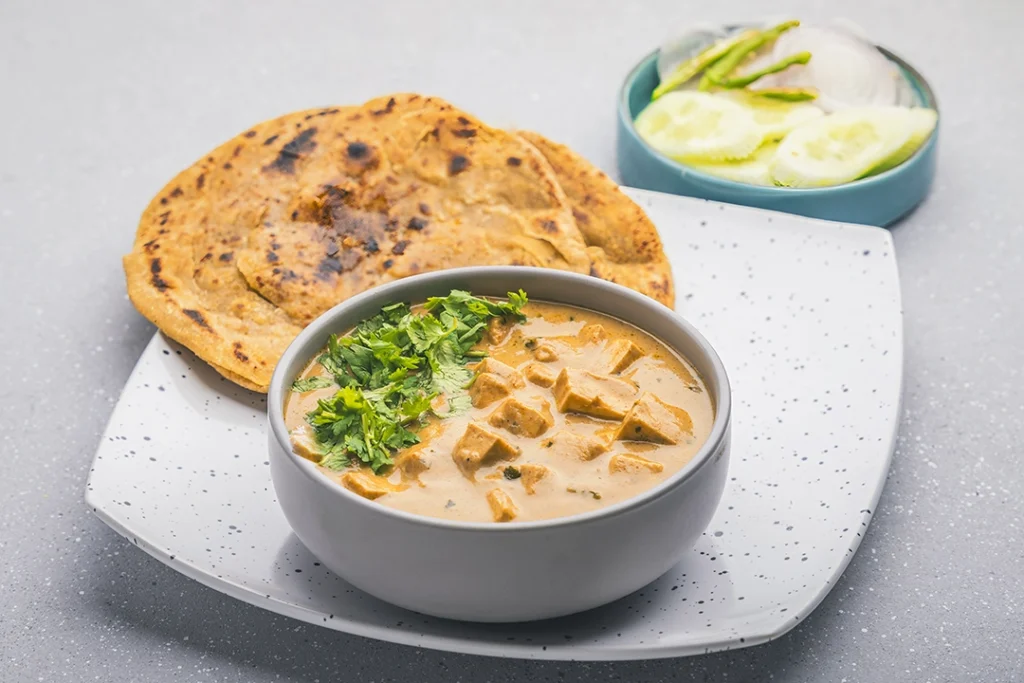
Rice Companions: It pairs equally well with steamed basmati rice. The saffron-infused Shahi Paneer sauce plays off the delicate fragrance of the rice, creating a symphony of flavors with each spoonful.
Vegetarian Thalis: Shahi Paneer is a star in the elaborate Indian thali (platter) system. It often finds its place alongside other vegetarian dishes, such as rice or bread, dal (lentil curry), and a variety of chutneys and pickles.
Festive Feasts: This regal dish is a prominent feature during festive occasions and special celebrations. It’s a symbol of indulgence, shared joy, and feasting in Indian culture.
The Many Regional Variations:
One of the most enchanting aspects of Shahi Paneer is its myriad regional variations. From North to South and East to West, India’s diverse culinary landscape has put its unique spin on this royal dish. Here are some notable regional renditions:
North Indian Shahi Paneer
The classic version is characterized by a creamy, tomato-based sauce enriched with cashews and cream. It’s often garnished with slivers of almonds and pistachios.
South Indian Shahi Paneer
A slightly tangier take on the dish, with a coconut milk-based sauce and the addition of curry leaves and mustard seeds for a South Indian twist.
Hyderabadi Shahi Paneer
Known for its spicy kick, this version incorporates traditional Hyderabadi spices and a fiery sauce.
Punjabi Shahi Paneer
In Punjab, this dish is made with a rich, tomato-and-onion-based gravy, typically served with buttery naan or parathas.
Each regional variation showcases the diversity of India’s culinary heritage and allows you to experience the same royal dish in different, equally delicious ways.
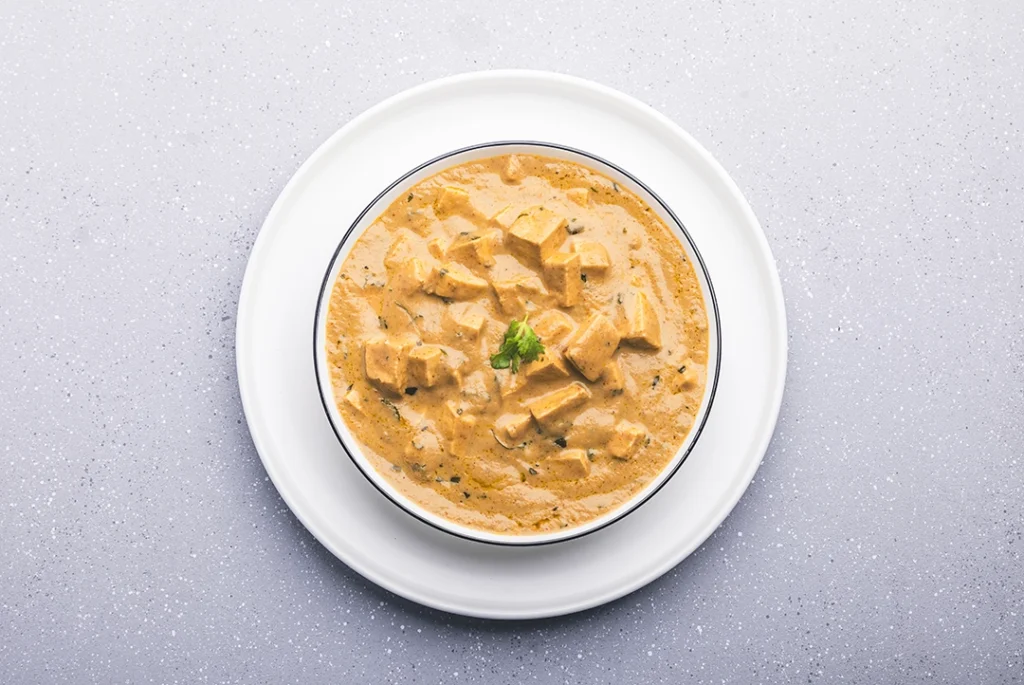
A Dish for All Occasions:
Today, Shahi Paneer has transcended its origins in royal kitchens and can be found in Indian restaurants and homes worldwide. Whether you’re celebrating a special occasion, hosting a dinner party, or simply craving a taste of regal indulgence, Shahi Paneer is the go-to dish that never disappoints.

Frequently Asked Questions (FAQs):
Q1: What is the key difference between Shahi Paneer and Paneer Butter Masala?
A1: While both dishes feature paneer in a creamy tomato-based sauce, the key difference lies in the richness. Shahi Paneer is often creamier and incorporates nuts, saffron, and aromatic spices, giving it a more opulent flavor profile.
Q2: Can I make a vegan version of Shahi Paneer?
A2: Absolutely! You can substitute dairy cream and yogurt with plant-based alternatives like coconut cream and dairy-free yogurt to create a vegan-friendly Shahi Paneer.
Q3: Is Shahi Paneer spicy?
A3: The level of spiciness can vary based on the recipe and individual preferences. Traditional Shahi Paneer tends to be mildly spiced, but you can adjust the heat to your liking by adding more or less chili powder.
Q4: Can I make Shahi Paneer in advance for a party?
A4: Yes, Shahi Paneer reheats well and often tastes even better the next day as the flavors meld together. Just store it in an airtight container in the refrigerator and gently reheat it before serving.
Conclusion:
In the realm of Indian cuisine, Shahi Paneer stands as a testament to the country’s diverse culinary heritage. Its origins in the royal kitchens of the Mughals, its seamless integration into everyday Indian menus, and its ability to complement various accompaniments make it a true gem of Indian gastronomy.
Whether you enjoy it with a warm roti or fragrant rice, the creamy and aromatic Shahi Paneer never fails to capture the essence of India’s culinary diversity. So, the next time you savor this regal delight, you’ll not only be tasting history but also experiencing the fusion of cultures and flavors that make Indian cuisine a culinary treasure trove. Shahi Paneer isn’t just a dish; it’s a royal experience that reigns supreme on Indian menus and in the hearts of food enthusiasts around the world.







